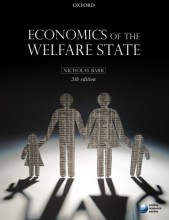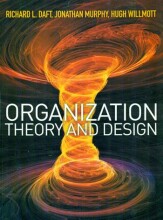Summary: The Economics Of The Welfare State | 9780199297818 | Nicholas Barr
- This + 400k other summaries
- A unique study and practice tool
- Never study anything twice again
- Get the grades you hope for
- 100% sure, 100% understanding
Read the summary and the most important questions on The economics of the welfare state | 9780199297818 | Nicholas Barr.
-
1 Introduction
-
1.2.1 Defining the welfare state
This is a preview. There are 1 more flashcards available for chapter 1.2.1
Show more cards here -
From which four sources does individual welfare derive?
The labour market - income and occupational welfare: sickness, injury and retirement
Private provision: insurance and individual saving
Voluntary welfare
The state: cash benefits and benefits in kind. -
What are examples of different modes of delivery?
- The state can produce service itself and supply it to recipients at no charge (health care under the National Health Service)
- can give individuals money (explicitly/tax relief) -
For which activities in four broad areas is is the term 'welfare state' used?
Cash benefits
Health care
Education
Food, housing, and other welfare services
-
What are examples of benefits in kind?
Education
Medical care
Care for the infirm (zwakken), mentally and physically handicapped, children in need of protection
-
What are the two major components of cash benefits?
Social insurance (on basis of previous contributions and occurence of specified contingency, such as reaching a specified age)
Non-contributory benefits: universal and social assistence (based on an income test) -
1.2.2 The objectives of the welfare state
-
What are three aspects of efficiency?
Macro-efficiency: e.g. policy should avoid distortions leading to cost explosions
Micro-efficiency: total welfare-state resources should be efficiently divided between differents cash benefits, different types of medical treatment, and different kinds of educational activity
Incentives (stimulansen): the finance and structure of benefits of publicly funded institutions should minimize adverse effects on labour supply, employment and saving.
-
What are three components of supporting living standards?
Poverty relief: effectiveness measured by: how many people, how much and how long
Insurance
Consumption smoothing: individuals should be able to reallocate consumption over their lifetime, save more in period 1 so there is more to spend in period 2. (pensions, tax-funded provision to families with young children).
-
What are the differences between vertical and horizontal equity?
Vertical: system should redistribute toward individuals or families with lower incomes.
Horizontal: age, family size, etc. should be taken into account with differences in benefits. Differences in medical treatment should reflect relevant factors (dependent relatives or not) instead of irrelevant factors like ethnic background. -
Explain why cash benefits and health care should be aimed at dignity and social solidarity.
People have to feel that they are assured not as a charity, but as a right
Benefits should depend on criteria unrelated to socio-economic status (retirement pensions and medical care)
-
What are the two aspects of administrative feasibility (uitvoerbaarheid)?
Intelligibility (begrijpelijkheid): simple and as cheap to administer as possible
Absence of abuse: benefits should be as little open to abuse as possible
- Higher grades + faster learning
- Never study anything twice
- 100% sure, 100% understanding
































